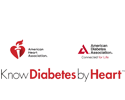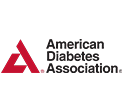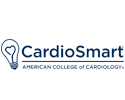It’s Not Over Yet: Addressing Part Two of the Door-to-Balloon Time Initiative’s Success
From the very first sign of a heart attack, the clock starts ticking in the race to save a patient’s heart muscle and even his or her life.
Thanks to technology and finely tuned systems of heart attack care that are now available in communities throughout the United States, we are getting faster all the time.
But sometimes we still lose the race.
During a heart attack, the heart is deprived of oxygen. The longer the heart goes with too little oxygen, the more muscle is lost, often irreversibly. This is what doctors mean when we say, “Time is muscle.” How quickly a patient receives treatment once heart attack symptoms appear often determines if he or she will make a full recovery, suffer heart muscle damage, or die.
Door to Balloon Signaled Success, or Did It?
This is why, a decade ago, healthcare professionals across the country set out to reduce the time it takes to treat heart attack patients once they arrive at the hospital. Since stopping a heart attack often involves balloon angioplasty to reopen the blocked artery, the effort was called the Door-to-Balloon (D2B) Initiative. This effort has prevented or limited heart damage for countless patients.
The D2B initiative involved making the healthcare system more efficient, more responsive and more effective, starting from the moment a heart attack patient comes to the attention of an emergency medical responder (EMR) answering a 9-1-1 call or presenting in the emergency department. When D2B began, it often took more than two hours from the time a heart attack patient arrived at the hospital until he or she received life-saving treatment to reopen a blocked artery.
Now, 90 percent of patients who enter hospital doors receive treatment in less than 90 minutes and many are treated within 60, 30, even 15 minutes. [1]
D2B is one of healthcare’s greatest success stories. But, according to a new study [2], reducing D2B times has not been enough to significantly reduce mortality rates among heart attack patients.
What Happens Before the Hospital Door?
There are two sides to the time equation. Unfortunately, the part of the equation that has not improved enough is how long it takes patients to get to the hospital once heart attack symptoms start. Most patients wait two or more hours after heart attack symptoms appear to seek medical help. [3] Many patients are taking too long to call 9-1-1, placing themselves at risk of suffering irreversible heart damage or death.
We must do for Symptom-to-Door (S2D) Time what we have done so successfully for D2B. Revamping a system of care outside the hospital, however, is much different and perhaps more difficult than revamping a system of care within the hospital.
There have been myriad heart attack awareness programs, including online public education programs like SecondsCount.org, for which I am an editor, aimed at helping people understand the risks of heart attack, how to recognize the symptoms and why responding promptly is essential.
We have made progress. An increasing number of people know that chest pain, shortness of breath, nausea, fatigue, dizziness, and pain in the jaw, back or arm are often the first signs of heart attack. While I see more people who identified their symptoms early on, there are also many who remain unaware, are in denial or are just confused. Every day, I see patients who thought their symptoms “weren’t that bad” or explain them away as indigestion or a virus. I also see the toll that lost time takes in hearts damaged and lives lost.
Only 60 percent of patients contact emergency medical responders when experiencing symptoms. About 40 percent arrive at our hospitals on their own. [4] That’s dangerous, whether the patient is driving him- or herself. Or, even if a friend or relative is driving, it still represents a lost opportunity for treatment to begin in the ambulance, or to alert the doctors in the emergency room that a heart attack patient is on the way in.
Let’s Save More Hearts and Lives
To get started, here are a few thoughts on how we might reduce S2D:
- We need a concerted national effort to reduce S2D time that establishes consistent messages rather than myriad programs offering incomplete or inconsistent information.
- We must improve regional and statewide systems of care to coordinate heart attack care to ensure everyone gets the most expeditious care.
- We need to better inform the people who are most at risk for heart attack or other heart issues about what symptoms to look for and what to do if they develop.
- And, of course, we must continue our educational efforts, helping everyone to understand that if they are concerned they may be having a heart attack, then they should call 9-1-1 without delay and without concern about looking foolish if their symptoms turn out to be something other than a heart attack. The alternative – sitting at home while having a heart attack, with heart muscle dying as the minutes tick by – would be far worse.
We’ve had remarkable success in reducing D2B times. But it’s not enough. To save hearts and lives, we must take on the other side of the heart attack challenge.
We’ve done it once. We can do it again.
1. Bates ER, Jacobs AK. Time to Treatment in Patients with STEMI. N Engl J Med 2013;369:889-892.
2. Menees DS, Peterson ED, Wang Y, et al. Door-to-balloon time and mortality among patients undergoing primary PCI. N Engl J Med 2013;369:901-9.
3. Life After a Heart Attack. National Heart, Lung, and Blood Institute.
4. http://nypress.com/forty-percent-do-not-call-911-survival-rates-show-every-minute-matters/, http://www.nejm.org/doi/full/10.1056/NEJMp1308772



















